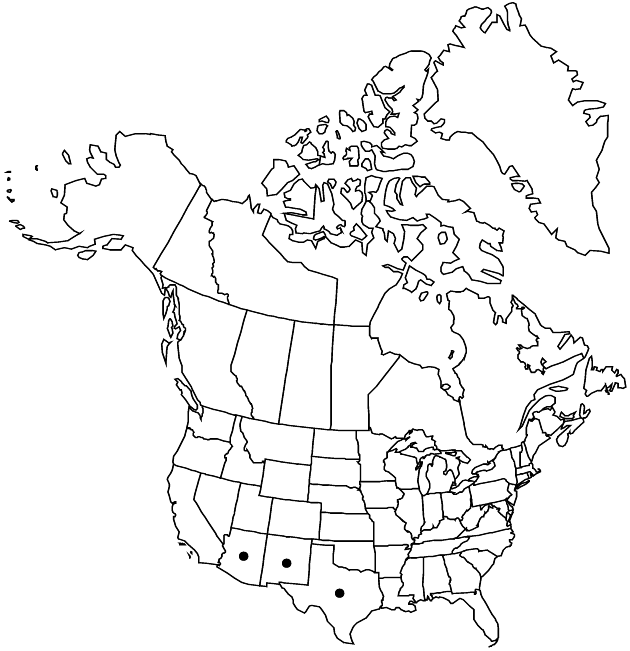Difference between revisions of "Brickellia coulteri var. brachiata"
Phytologia 68: 237. 1990.
Basionym: Brickellia brachiata A. Gray Proc. Amer. Acad. Arts 21: 385. 1886
Treatment appears in FNA Volume 21. Treatment on page 497.
FNA>Volume Importer |
imported>Volume Importer |
||
| (5 intermediate revisions by 2 users not shown) | |||
| Line 7: | Line 7: | ||
|year=1990 | |year=1990 | ||
}} | }} | ||
| − | |basionyms={{Treatment/ID/ | + | |basionyms={{Treatment/ID/Basionym |
|name=Brickellia brachiata | |name=Brickellia brachiata | ||
|authority=A. Gray | |authority=A. Gray | ||
| + | |rank=species | ||
| + | |publication_title=Proc. Amer. Acad. Arts | ||
| + | |publication_place=21: 385. 1886 | ||
}} | }} | ||
|synonyms= | |synonyms= | ||
| Line 35: | Line 38: | ||
-->{{#Taxon: | -->{{#Taxon: | ||
name=Brickellia coulteri var. brachiata | name=Brickellia coulteri var. brachiata | ||
| − | |||
|authority=(A. Gray) B. L. Turner | |authority=(A. Gray) B. L. Turner | ||
|rank=variety | |rank=variety | ||
| Line 50: | Line 52: | ||
|publication year=1990 | |publication year=1990 | ||
|special status= | |special status= | ||
| − | |source xml=https:// | + | |source xml=https://bitbucket.org/aafc-mbb/fna-data-curation/src/2e0870ddd59836b60bcf96646a41e87ea5a5943a/coarse_grained_fna_xml/V19-20-21/V21_1251.xml |
|tribe=Asteraceae tribe Eupatorieae | |tribe=Asteraceae tribe Eupatorieae | ||
|genus=Brickellia | |genus=Brickellia | ||
Latest revision as of 20:09, 5 November 2020
Leaf blades 10–40(–50) × 10–20 mm, midstem blades mostly 20–40(–50) mm. Peduncles 5–25 mm, pubescent, mostly lacking glandular hairs. 2n = 18.
Phenology: Flowering Mar–Oct.
Habitat: Open sandy areas, arid rocky slopes, desert canyons
Elevation: 400–2000 m
Distribution

Ariz., N.Mex., Tex., Mexico.
Discussion
Variety brachiata includes most specimens from Arizona, except those from lower side canyons of the Grand Canyon. Those plants are strongly gland-dotted and often have larger leaves characteristic of the type variety. Some plants from southeastern Arizona are not clearly differentiated.
Selected References
None.
Lower Taxa
None.